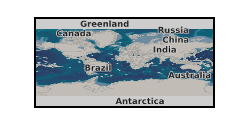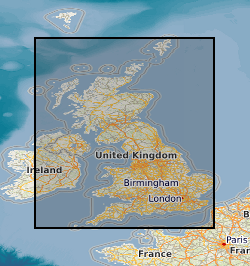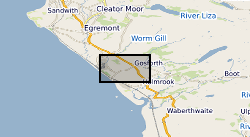Seismographs
Type of resources
Available actions
Topics
Keywords
Contact for the resource
Provided by
Years
Formats
Representation types
Update frequencies
Scale
-

Observed global seismograms used to study earthquakes in the Azores. The seismograms have been processed and then have been used to perform source inversions of the events.
-

The National Seismological Archive (NSA) is the United Kingdom national repository for seismological material. It was created principally to preserve data from seismological observatories in the UK that have now closed. In many cases in the past records have been lost or destroyed when there is no longer anyone to look after them; the NSA provides a permanent home for these historical scientific documents, to preserve them for posterity. The principal collection consists of the seismograms stores from defunct observatories; also bulletins and reports from all over the world dating from the 1890s onwards, held in a variety of media, including earthquake-related newspaper cuttings, glass slides, microfilm, and comprehensive UK earthquake research material collected over a 30 year period. The archive has a public access room available for researchers and welcomes visiting scientists who wish to study material held in it. If it is impractical to visit, we may be able to supply data from it, subject to staff availability. One of the major projects of the archive has been the presentation of current knowledge of UK historical earthquake seismology material in a short series of reports, easily accessible to researchers. These are available for download as Adobe Acrobat Portable Document Format files (.pdf) from the NSA download page.
-

This layer of the map based index (GeoIndex) shows the location of earthquakes within the UK. The historical catalogue has been compiled, in general, from macroseismic observations (ie felt effects). Before 1700, only earthquakes with magnitudes of 4.0 ML or greater are included. After 1700, all known events with magnitudes of 3.0 ML or greater are included together with some other, smaller ones. Accuracies of magnitude, location, and origin time vary with the quality of information available for this period as they do for instrumental measurements in the post 1970 period. In that case, variations are largely a function of the seismograph station coverage, which has been improving up to the present day.
-

A significant part of this data collection is geophysical survey data in digital form being derived data created during the subsequent processing and interpretation of the field data described in 'Nirex Magnetic Tape Archives - Raw Data'. These data were originally stored on a variety of media. With the overall aim of delivering an efficient and effective archive service, the data have been consolidated onto DLT cartridges. Some related data, which were either analogue, on obscure media or in unknown formats have been retained in their original form. British Geological Survey maintains a full catalogue of the data, as an Access database. The data sets that comprise the magnetic archive are the following: Seismic surveys: demultiplexed and processed data; Geophysical wireline logging of boreholes: wireline derived data including synthetic seismograms; cross-hole tomography. The ownership of NIREX (Nuclear Industry Radioactive Waste Executive) was transferred from the nuclear industry to the UK Government departments DEFRA and DTI in April 2005, and then to the UK's Nuclear Decommissioning Authority (NDA) in November 2006.
-

The paper archives comprise a set of the factual and interpretative reports that document the investigations carried out by Nirex (Nuclear Industry Radioactive Waste Executive) and its contractors. In total there are in excess of 2,250 individual volumes. It is the availability of this paper archive of results and interpretation that makes the Nirex geological archives of rock cores and samples unique. The ownership of NIREX (Nuclear Industry Radioactive Waste Executive) was transferred from the nuclear industry to the UK Government departments DEFRA and DTI in April 2005, and then to the UK's Nuclear Decommissioning Authority (NDA) in November 2006.
 NERC Data Catalogue Service
NERC Data Catalogue Service